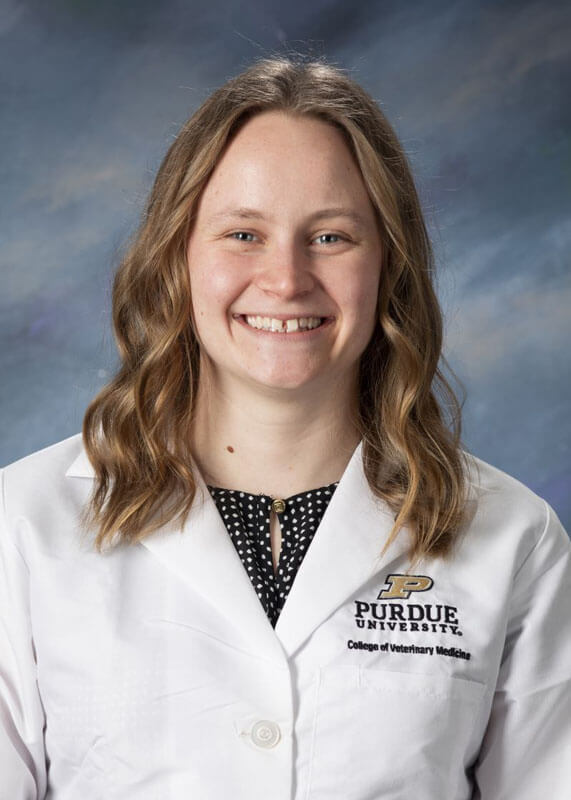
Congratulations are in order for fourth-year veterinary student Kelsey D’Amico (DVM Class of 2025), who reached a rare milestone in veterinary medicine as the first author on a research paper that just recently was accepted for publication by the Journal of Dairy Science. The article is entitled, “A randomized, controlled trial examining quarter-level somatic cell count and culture-based selective dry cow therapy against blanket dry cow therapy on early-lactation production outcomes.”
Kelsey’s co-authors on the paper include Dr. Ralph Neves, assistant professor of food animal production medicine and section head for the Purdue University Veterinary Hospital Bovine Field Service; Department of Veterinary Clinical Sciences (VCS) graduate student J. M. Grantz; VCS graduate student Natnicha Taechachokevivat; and Dr. Andy Hubner, clinical assistant professor of Farm Animal Field Services. Dr. Hubner said the research paper dates back to the summer of 2022, when the actual sample collection was done.
“The work was not in conjunction with any program, it was work that Kelsey participated in as a summer employee of the Bovine Field Service,” Dr. Hubner explained. “Then she decided to ‘own’ the project.” Kelsey presented the work at the last American Association of Bovine Practitioners (AABP) national meeting and won the student presentation award. “She then asked if she could write the paper,” Dr. Hubner said. “It is extremely rare for a veterinary student to take that on during their veterinary training and publish a first-author publication.”
Dr. Hubner said understanding the scientific process is extremely important for food animal veterinarians. “Doing a large-scale research project – one with over 800 enrollments – teaches students invaluable skills that cannot be gained elsewhere in the curriculum. It teaches them how to balance published literature with clinical experience, in order to make the best herd-level decisions for their future clients.” Dr. Hubner noted that some veterinary schools abroad require research as part of their veterinary curriculum in order to teach students this concept. “While our curriculum does not require this in order to graduate, once Kelsey started the project she recognized that by seeing the project all the way through to the end, she would learn valuable lessons that could not be gained elsewhere,” Dr. Hubner said. Click here to view the online article from the Journal of Dairy Science.
